How are our privately owned cultural properties doing? Go and see Boyl Palace in Pisa
“The private sector does not always take care of our heritage”: this is the truth that art historian Lorenzo Carletti wants to bring out through this interesting piece he sent us, which we gladly publish. Private individuals are not always the solution, and they do not always prove to be a viable alternative to public management. In this article, an example that comes from Pisa. Happy reading!
Last summer, La Nazione launched a provocative press campaign for the closure (and thus privatization) of Lucca’s two national museums, Palazzo Mansi and Villa Guinigi, because there would be too few visitors, numbers lower even than the customers of any pizzeria. The comparison between museums and pizzerias is extremely significant and was analyzed by a timely intervention of the Superintendent of Lucca together with the director of those museums (G. Stolfi - A. d’Aniello, Musei come pizzerie, ossia del patrimonio culturale come merce, in L. Carletti - C. Giometti, De-tutela, Pisa 2014, pp. 130-134).
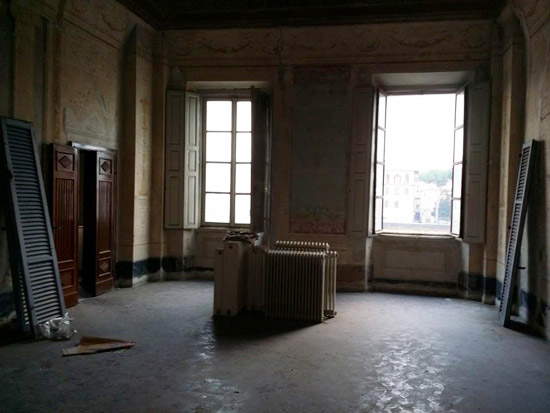 |
| Pisa, Boyl Palace, interior |
For more than 30 years everyone has been calling on the private sector to safeguard our cultural heritage, which in the meantime is being abandoned and sold off. Houses, palaces, castles, barracks, the real estate of the state is divested by every financial or stability law, offered at bargain prices to individuals or Italian or foreign companies; recently the island of Poveglia in the Venice Lagoon was auctioned, but also one of the most important Florentine Medici palaces and a medieval castle in the Viterbo area and some historic villas in Monza and Herculaneum (T. Montanari, Instructions for the Use of the Future, Rome 2014; S. Settis, If Venice Dies, Turin 2014). Impossible to keep the list up-to-date, see updates at www.patrimoniosos.it. All the more, then, it would be interesting to go and check the condition of our cultural assets when they are privately owned; not only museums, which is easy enough (just pay the ticket), but precisely villas, palaces, castles, barracks. One could make interesting discoveries and equally sensationalist headlines. Such is the case with Boyl Palace, one of the most important of the mansions overlooking the Pisan Lungarno, reopened a few days ago thanks to the Municipality of Common Goods. Dating back to the late 15th century and inhabited until 1841 by the Grassi family, which housed Domenico Guerrazzi, a Risorgimento writer and politician, it passed to the Counts Agostini Venerosi della Seta, whose descendants held the property until 2008, when the building became part of the assets of a joint stock company, the Tognozzi Group. Since then and for six years, scaffolding hid the beautiful façade decorated with late Renaissance graffiti to make luxury apartments inside; the Tognozzi firm then went bankrupt, and five months ago those scaffolds were removed. Now the entire building has been cleared of neglect and neglect, and the city has a chance to see what was hidden behind those scaffolds.
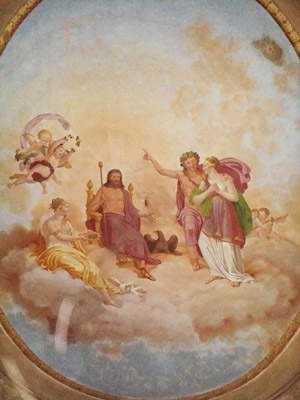 |
| The fresco of Olympus. |
One discovers a building that has undergone several renovations over time, very disrespectful especially in recent years. Almost certainly, its load-bearing structure consists of a series of medieval tower houses incorporated into the stately palace, which explains the presence of a large portion of geometric fresco decoration, indicatively datable to the 12th century, preserved on the second floor of the building; this pictorial testimony is not catalogued by the Superintendence and does not even appear in the volume that ten years ago surveyed medieval frescoes in the city non-figurative (M. Burresi - A. Caleca, Medieval Frescoes in Pisa, Pisa 2003). Unfortunately, architectural interventions of readjustment of spaces for the creation of studios and private residences have gone to affect these ancient paintings, as well as the more recent ones attributed to the Butese painter Annibale Marianini (1814-1863), an important figure for the city because when he was director of the Academy of Fine Arts of Pisa he carried out a filing of the works of art in the area (M. Burresi, Un Pittore a Pisa nellOttocento, Pontedera 1996). Also on the second floor one can admire, among others, an Aurora on the model of Guido Reni’s at the Casino Rospigliosi in Rome, while on the piano nobile is the large fresco ofOlympus, flanked by two friezes traced in monochrome, which are striking for their miserable state of neglect.
It is a conservation problem, indeed, both of the whole palace but also of the frescoes, which it would be good to photograph as soon as possible. In recent decades, compartments have been created that are totally disrespectful of the historical structure of the palace and its decoration, and one wonders how the Soprintendenza could endorse such choices, especially since, like the other buildings on the Lungarno, this one should also be notified. How is it that, the medieval and modern frescoes have not been catalogued, studied, and included in the usual protective action? And above all, why, in the course of time, have the various owners (and not only the last) been able to lightly one would say unconsciously and without any control transform such architecture? Thanks to the Municipality of the Common Goods, for a few days in Pisa we can verify that the private sector does not always take care of our heritage, and that today more than ever we need a public institution, strengthened and functioning, which also protects it from the owners themselves. As the current laws would like.
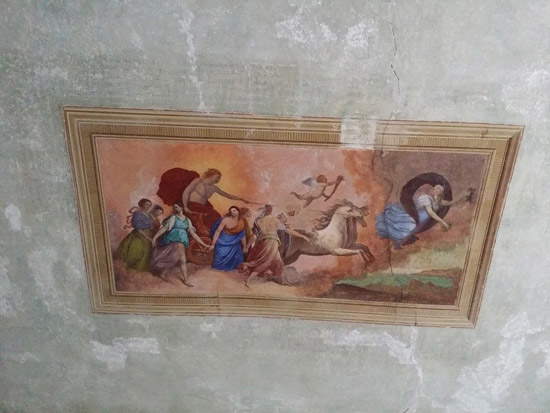 |
| The Aurora modeled after Guido Reni’s fresco in Rome. |
The mythologizing of the private sector thus clashes with reality other historic palaces of the Pisan Lungarno are in similar conditions , showing a face not very dissimilar to that of the much vituperated public. It is no coincidence, perhaps, that four months after the approval of theArt Bonus, the legislative intervention that introduced a tax credit of 65 percent of the liberal donations made by private individuals for the benefit of culture from 2014 to the end of 2015 and 50 percent from 2016 onward, the data provided by MiBACT tell of a total failure: very little funding has arrived so far (S. Monti, Art bonus still without results, in “Tafter. Culture is Development,” Nov. 21, 2014).
Some pictures of Boyl Palace
 |
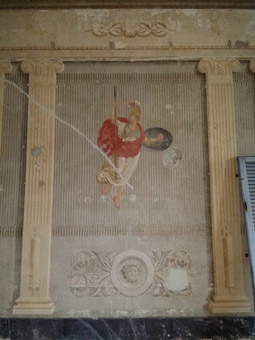 |
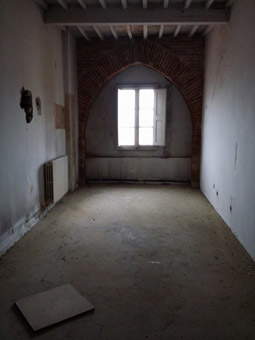 |
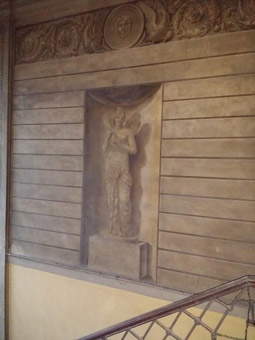 |
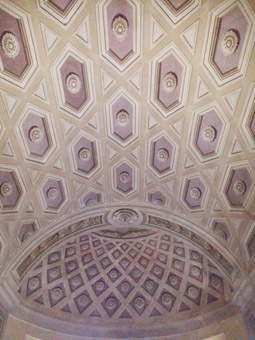 |
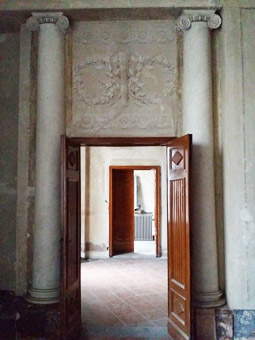 |
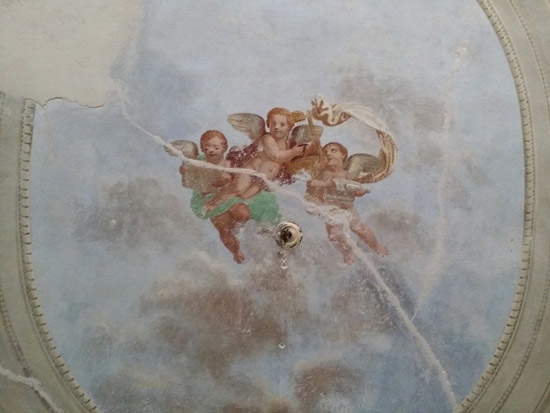 |
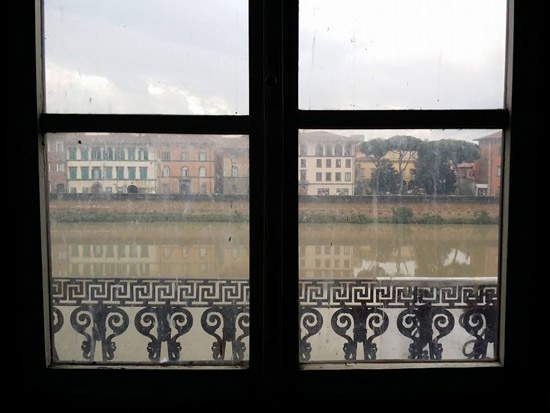 |
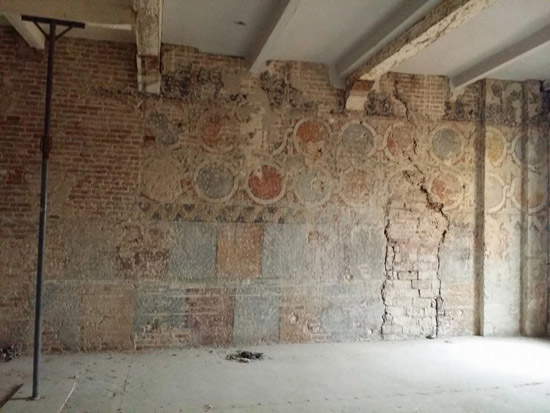 |
Warning: the translation into English of the original Italian article was created using automatic tools. We undertake to review all articles, but we do not guarantee the total absence of inaccuracies in the translation due to the program. You can find the original by clicking on the ITA button. If you find any mistake,please contact us.



























